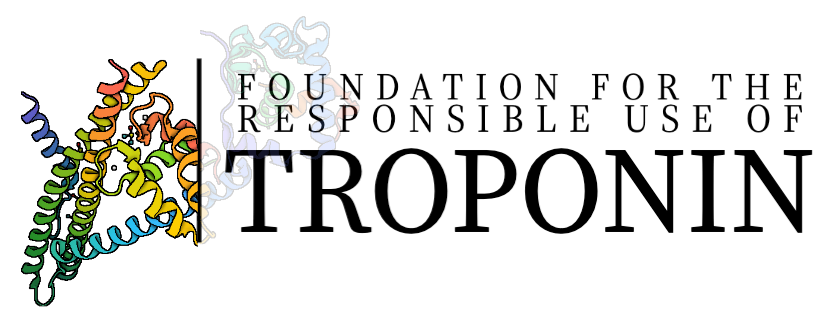The limit of blank (LoB) represents the noise inherent to the measurement system, and is defined as the 95th percentile of the analytic signal when no Tn (0 ng/L), only plasma or serum, is present in samples tested [46]. The limit of detection (LoD) is an analytical parameter used to detect the minimal concentration of Tn obtained in the bi-ologic fluid and is defined as the mean signal at which 95% of the frequency distribution is above the LoB. The LoD is always higher than the LoB, by definition.
The limit of quantification (LoQ) shows the functional sensitivity of the Tn assay and is defined as the minimum concentration at which the coefficient of variation is ≤20% [47]. The LoQ is thus always higher than the LoD, by definition. Imprecision at the LoD is high, whereas measurements at the LoQ can be reported with a degree of certainty (CoV ≤ 20%). The LoQ is FDA-reportable, but not the LoD. It has been previously demonstrated that LoQ < 6 ng/L is a safe cutoff to rapidly rule out acute MI through a single hs-TnT test in the ED [48]. According to the 2021 AHA/ACC guidelines [47,49], for patients with acute chest pain, a normal ECG, and ACS symptoms that started at least 3 h prior to ED arrival, a single hs-Tn concentration that is below the LoD on the initial measurement (i.e., “un-detectable”) can reasonably exclude myocardial injury, whereas patients with detectable concentrations should proceed with serial measurement of hs-Tn (e.g., at 1 and 3 h). The AHA/ACC guidelines do not endorse a single particular protocol for 0/1/3 h, 0/1 h, or 0/2 h rule-out, unlike the ESC guidelines [50].
The 99th percentile upper reference limit (URL) of Tn is used to support the diagnosis of acute myocardial injury or MI as recommended by multiple international committees, including the European Society of Cardiology, ACC, AHA, National Academy of Clinical Biochemistry, the International Federation of Clinical Chemistry Task Force and Com-mittee of Clinical Applications of Cardiac Biomarkers [51]. It is defined as the concentration detected exceeding the 99th percentile of the values of a healthy reference population. It is approximately three standard deviations above the mean of the normally distributed population. It was originally adopted to match the cutoff for CK-MB and the 99th per-centile cutoff was chosen to reduce the erroneous interpretation of patients with MI [52]. Furthermore, the imprecision (coefficient of variation) was suggested to be less than 10% at the 99th percentile, as better precision allows for more sensitive assay [53]. It should be noted that the 99th percentile URL is assay-specific and can vary by sex.
Gokhan I, Dong W, Grubman D, Mezue K, Yang D, Wang Y, Gandhi PU, Kwan JM, Hu J-R. Clinical Biochemistry of Serum Troponin. Diagnostics. 2024; 14(4):378. https://doi.org/10.3390/diagnostics14040378
